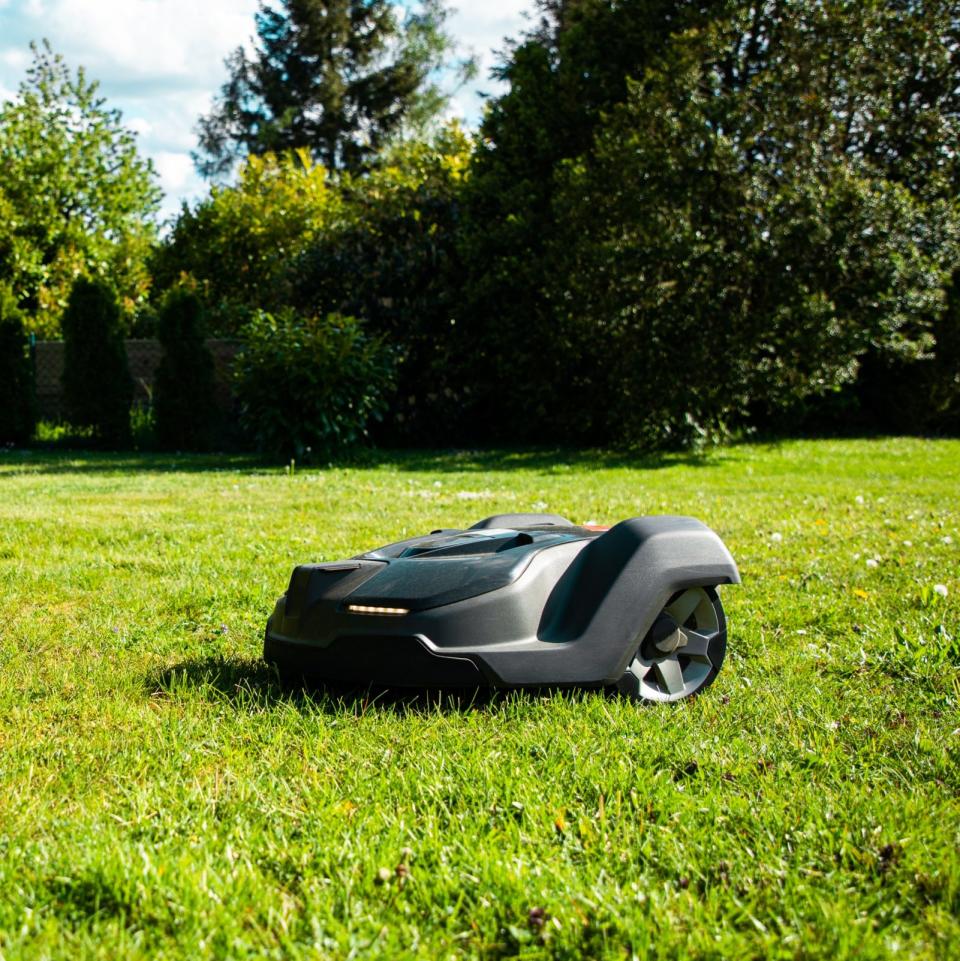How to get an Oxford college-perfect lawn

Gardeners “have been led down the garden path” by so-called hard-wearing ryegrass mixes, says lawn consultant David Hedges-Gower.
The consultant, who is also chairman of the Lawn Association, has launched a project with Oxford University, to teach its gardeners how to keep the university’s lawns in tip-top condition, without requiring extensive watering and chemical use.
The turfcare veteran says that the university colleges, renowned for their lawns stretching out down to the punts on the River Cherwell, came to him seeking advice when they noticed their swards were not looking their best – and not because of heavy use by students, dons and tourists: there are plenty of “keep off the grass” signs around the colleges.
Hedges-Gower claims that the college gardeners have been misled by claims that modern ryegrass seed mixes will combat hard wear, particularly as we experience more extreme weather that floods and scorches the turf, no matter what care we give it.
Yet the modern seed mixes that have been used to re-turf many of the previously immaculate lawns in recent years (and, no doubt, many domestic gardens) now need regular significant repair, because keeping a ryegrass lawn thick and lush requires “repeated, almost yearly reseeding, regular watering and heavy pesticide use”.
Alastair Mallick, head gardener of Oxford’s Somerville College, said that it had been “eye-opening” to discover “all the misleading information that we have been told over the years”. “Our newfound understanding of lawn care is not only simpler but aligns perfectly with our sustainability goals,” he added.

“The mantra ‘right plant for the right place’ couldn’t be more apt. While sports grasses like ryegrass might suit football fields, they simply don’t align with our aspirations for our lawns.”
Here are some of the findings from the course, which could help the ordinary gardener to achieve that elusive perfect lawn.
Types of grass to use
Hedges-Gower recommends a bent fescue rather than a rye grass. “Ryegrass is great for the money-pit sports industry but is rarely necessary,” he says, adding that keeping a ryegrass lawn thick and lush requires repeated, almost yearly reseeding, regular watering and heavy pesticide use. But traditional grasses, such as bents and fescues, offer a healthy native lawn that is much more self-sustaining.
When to mow
Hedges-Gower’s thinking is that cows, sheep and cattle keep the grass under control in the countryside, where healthy swards and healthy soil go hand-in-hand: “You don’t see weeds there.”
There is no set rule regarding frequency, but mowing daily helps build density and blocks out weeds, if you have the right grass to begin with.
Convention suggests mowing down one third of the grass blade, but Hedges-Gower believes that is “a stupid saying”. He believes 25mm is a good height to cut to.

Robotic mowers can take the labour out of this and can be programmed to cut at exact heights: “The rule of thumb is cut as much as you need or want. Once a week is good enough, but for a perfect lawn, the best plan is to cut seven days a week.
“The more you mow, the more dense your lawn becomes. It’s as simple as that.”
Notes on nutrition
Nutrition for the lawn, and how this can be achieved without the need for polymer-coated synthetic fertilisers, will also be high on the agenda for turf lovers.
Polymer-coated fertiliser – sold as “slow release”, or “controlled release” – can be a plastic pollutant, Hedges-Gower believes, with “hundreds of thousands of tonnes of this each year” going into the soil.
The Lawn Association’s own product, Truegrass, uses food waste as a “carrier”, rather than polymer or chalk. The product contains mycorrhiza and seaweed, as well as humic, fulvic and amino acids, and the food waste breaks down, adding further nutrients to the earth.
Weed control
A dense sward of native grass to keep down weeds is the key. Weedkiller will only kill young annuals, which you won’t get with native grasses; and overuse will lead to mud and a great platform for weed seeds to germinate. A few weeds in the lawn are generally accepted nowadays, to add biodiversity to the garden: “Dandelions and daisies are fine,” says Hedges-Gower, who believes grass is best as the “dominant” lawn plant.

“A weed is just a plant that we brand as a weed.” His advice, if you use your garden for socialising, is to think of the grass as “a clever canopy for the soil, so you can have parties or so the kids can play on it.”
Watering strategy
Rye grass needs a huge amount of water to look good, as it is designed as a crop and grows fast but not dense. However, Hedges-Gower’s advice is not to water your lawn in the summer: “We’re only talking 12 weeks a year and it’s not necessary to water unless you have a sustainable source,” he says. “When the rains come back, the grass comes back, after going to sleep during hot spells.”
In summary
The current, widely held belief system in lawncare is that what seed you use entirely depends on the purpose of the turf. Rye is for football and rugby pitches, and for all-purpose amenity and “family” lawns, because rye is seen as tough.
Fescues and bents are much finer and are used for luxury lawns and areas such as golf courses and bowling greens; fescues and bents can withstand close mowing better than rye grasses.
Hedges-Gower turns this on its head and says it is the old-fashioned fescues and bents that are the more sustainable choice and will require less water and feeding. He gives the example of Hidcote in Gloucestershire, where he was a consultant to the National Trust when there were problems with a worn lawn in the garden.
He recommended replacing rye with bent fescue as a more innovative, native solution: “These grasses cover the British countryside and that tells you how successful they are.”
But can we say goodbye to the hard work of mowing? You are being misled if you think you can lock the lawnmower up in the shed forever. Unless you can afford a robot or you have enough space for cattle, you really have been led down the garden path if you think you can put your feet up all year and just watch the grass grow.
Though with current trends for wilder lawns, and with Hedges-Gower’s recommended fescue and bent grasses, you can afford to be a lot lazier than lawn-lovers used to be.
“You can never not cut grass,” concludes Hedges-Gower, “but this native grass species is happy at all heights, and all ways you wish to maintain your lawn – be that mown short, looked after normally, or even grown into a once-a-year meadow.”

